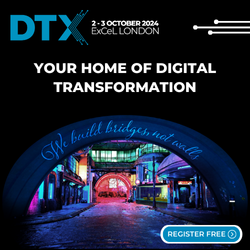How Ending Hybrid Work Will Reshape Your 9 to 5
June 19, 2024 No Comments
Photo credit: Freepik
by Rob Teitelman
In the wake of the pandemic, hybrid work became the norm for many organizations, offering flexibility and a new dynamic to the traditional 9 to 5 grind. However, as we gradually move towards a post-pandemic era, many companies are reassessing their remote work policies.
The decision to end hybrid work might seem like a step backward, but in reality, it’s an opportunity for both employers and employees to redefine the way we work. Let’s delve into how this change will reshape your 9 to 5.
Structured Routine vs. Flexible Schedule:
Hybrid work blurred the lines between office hours and personal time, allowing for flexibility but also making it harder to switch off. With the return to in-person work, employees will once again follow a structured routine, which can bring back a sense of work-life balance. Knowing when your workday starts and ends helps in creating boundaries and allocating time for personal activities.
Collaboration and Creativity:
While hybrid work fostered independence, it sometimes hindered collaboration and spontaneous interactions. Being physically present in the office encourages face-to-face communication and brainstorming sessions, which can lead to increased creativity and innovation. The exchange of ideas in real-time can spark new initiatives and strengthen team dynamics.
Workplace Culture and Connection:
Remote work challenged the sense of belonging and camaraderie within teams. Ending hybrid work means more opportunities for social interaction and building relationships in the workplace. From water cooler chats to team lunches, these informal moments are vital for fostering a positive workplace culture and strengthening bonds among colleagues.
Professional Development and Mentorship:
In-person work provides a conducive environment for mentorship and professional development. Casual mentorship conversations, on-the-job training, and observing senior colleagues in action are invaluable experiences that are better facilitated in the office setting. Ending hybrid work can reignite these mentorship opportunities and accelerate career growth.
Health and Well-being:
While remote work offered convenience, it also led to prolonged screen time, sedentary behavior, and feelings of isolation. Returning to the office promotes physical activity through commuting and encourages social interaction, which are crucial for mental health and well-being. Additionally, separating workspaces from living spaces can help in maintaining a healthier work-life balance.
Commuting, whether by walking, biking, or using public transportation, adds a natural element of movement to the day, counteracting the sedentary lifestyle often associated with remote work. The office setting may offer ergonomic workstations and environments designed to promote proper posture and reduce strain on the body, which can contribute to long-term physical well-being. By incorporating these elements into the workday, employees can cultivate a holistic approach to health that encompasses both physical and mental well-being.
Final Thoughts
As organizations transition away from hybrid work arrangements, it’s essential to embrace this change as an opportunity for growth and adaptation. While the return to in-person work may present challenges, it also brings numerous benefits, including a structured routine, enhanced collaboration, stronger workplace connections, and improved well-being. By embracing the reshaping of the 9 to 5, both employers and employees can create a more fulfilling and productive work environment for the future.


 Inside the Briefcase
Inside the Briefcase












Sorry, the comment form is closed at this time.